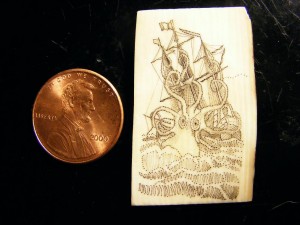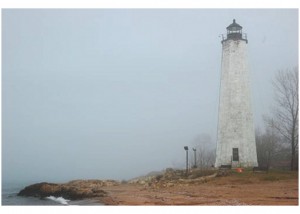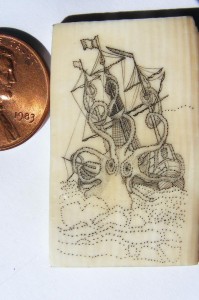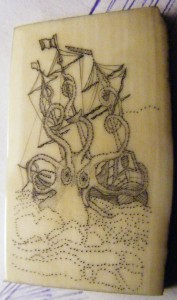Finished the rat lines, started the waves. On the original, the waves were created as many fine lines for the dark water leaving areas blank for the white caps. The upper right where I started I scribed very lightly, and as I went across and down, I became more aggressive. The lower right is just about perfect, though I will have to work in the stipple dots to minimize their prevalence. The mid-left did not fill in very well, and I realized I was scribing them at an angle instead of straight up and down, so the oil paint wiped right out.

From this point the work will be balancing the light and dark, creating thicker lines and adding more stipple dots to shade “Squidward” – right now he’s looking a bit anemic when I look at the piece unaided by a magnifying glass. A looming question will also be how to present the piece once it’s done?




